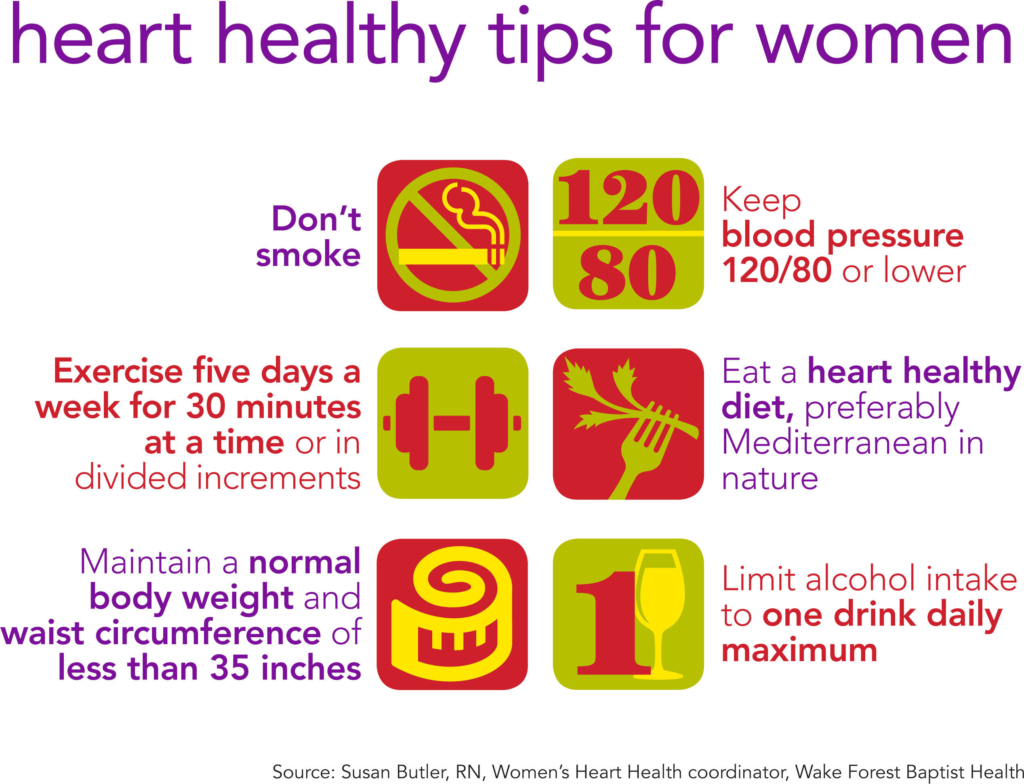
It was 12 years ago that she experienced difficulty breathing on a Saturday morning. She went to a doctor and he suggested that she had a bad case of nerves. During the following week, she added a cough to her list of complaints, and the doctor’s diagnosis advanced to a virus.
But Macy kept feeling worse, and she visited the doctor numerous times over the next five weeks.
Only after a chest X-ray revealed fluid in her lungs and she underwent an echocardiogram did the true nature of her problems become apparent: Macy had a blood clot and congestive heart failure.
Though she had to endure a four-week hospital stay, which included having a large quantity of fluid drained from her body and a diagnosis of Type 2 diabetes, Macy recalled, “I was actually happy.”
Because she finally had an answer.
As she recovered by taking medications and adopting healthier habits, Macy realized that she was among the group of women with cardiovascular disease – the umbrella term for diseases of the heart and blood vessels – whose conditions are all too frequently misdiagnosed or improperly treated.
“I think it’s a predisposition,” Macy said. “Some doctors get a mindset that women have nerve problems, men have heart problems.”
Recent studies have shown that men’s and women’s hearts function differently, and some gender-based differences in diagnosis and therapy have been identified. But the improper diagnosis and inappropriate treatment of cardiovascular disease (CVD) in women remains a significant issue.
“We’re seeing, unfortunately, younger women having more coronary disease, and the mortality rate is climbing in this group,” said Dr. Gretchen Wells, a cardiologist at Wake Forest Baptist Medical Center in Winston-Salem, N.C., and the physician who diagnosed Macy’s congestive heart failure back in 2002. “Why are these women as young as 40 dying?”
The Society for Women’s Health Research (SWHR) and WomenHeart: The National Coalition for Women with Heart Disease noted in a 2011 report that while cardiovascular disease is the leading cause of death among women in the United States and more women than men die of heart disease each year, the medical treatment of women with heart and vascular problems has not changed substantially in recent years and there has not been sufficient research into the distinct sex-based differences that exist in CVD.
“Women are more likely than men to have delayed diagnosis and treatment due to heart attack symptoms that are overlooked or unrecognized,” the report stated. “Women also are less likely than men to receive cardiovascular diagnostic tests and are less often prescribed life-saving therapy with aspirin, beta-blockers or statins.”
Wells noted that the reasons behind the differences between men’s and women’s cardiovascular issues are still unclear in many cases.
“Elderly women get heart failure, but it’s different from the heart failure that [former Vice President] Dick Cheneyhad, where his heart muscle function was reduced,” Wells said. “Many elderly women have good heart function yet still have signs and symptoms of heart failure. And we don’t yet fully understand the reasons.”
The SWHR-WomenHeart report suggested that the inclusion of more women and minorities in CVD research trials would result in better preventive measures, improved methods of early detection, more accurate diagnoses and more effective treatment for all women with heart and vascular problems.
Along those lines, Wake Forest Baptist plans to open a Women’s Cardiovascular Center later this year. Dr.David Zhao, chief of cardiology at Wake Forest Baptist, said the goals of the center will be to educate women how to lead healthier lives and reduce the risk of CVD, to properly diagnose and treat women when they do face heart and vascular problems and to be at the forefront of research that can lead to better solutions for women’s cardiovascular issues.
“Instead of chasing the disease, we need to try to prevent the disease in the population,” Zhao said.
“The response so far has been great with patients, women’s groups and the community,” said Wells, who will lead the new center. “I don’t need to convince them.”
Especially not Sara Macy.
“I know what to look for now,” said the retired administrative aide at Wake Forest University. “People need to have an education about whatever’s going on with their health.”
